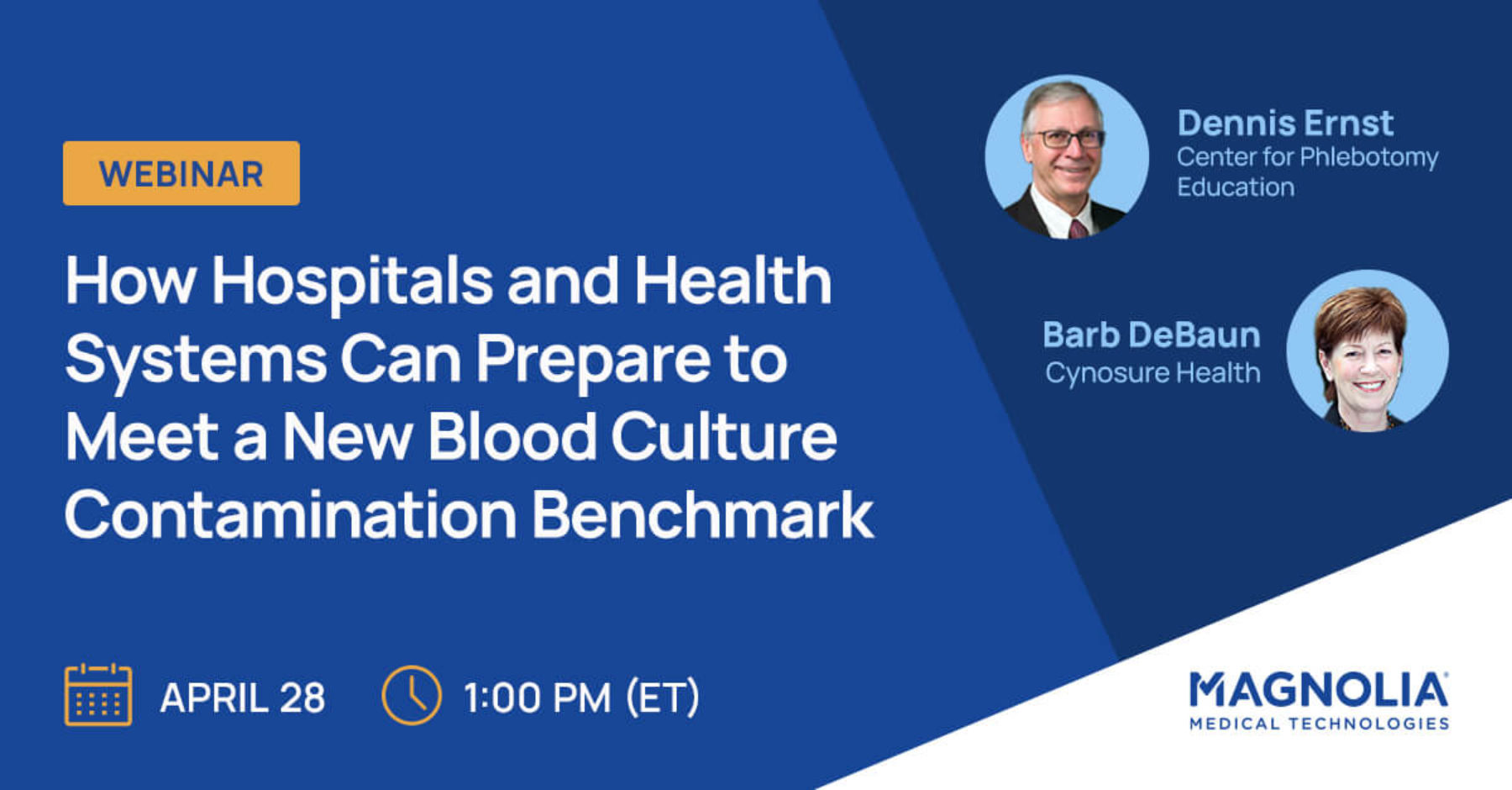How Hospitals Can Prepare to Meet a New Blood Culture Contamination Benchmark

Blood culture contamination is a significant issue that impacts all hospitals. One of the biggest challenges faced during blood sample collection is ensuring an organism is not inadvertently introduced into the blood. Thirty-five to 50% of positive blood culture results indicating sepsis are false positives that resulted from touchpoint contamination and/or skin and skin plug contamination at the time of collection. These false-positive sepsis results confound clinical decisions regarding antibiotic therapy, including selection and de-escalation of broad-spectrum antibiotic treatment.
For the average-sized hospital, this means:
- 300 or more patients may be adversely impacted by false-positive blood cultures every year in the emergency department (ED) alone
- These patients are often treated with unnecessary antibiotics with attendant risks of secondary infection such as difficile, multidrug-resistant organisms (MDROs), and other antibiotic-associated complications
- Unnecessary laboratory workflow burden
- An estimated $1 million or more in avoidable costs
The key purpose of this webinar is to demonstrate the profound impact that blood culture contamination has on both patient care and hospital costs and to present an evidence-based solution and best practices to produce immediate improvements at webinar attendees’ hospitals.
Laboratory leaders need to be aware of the national movement toward a new blood culture contamination benchmark
Typical interventions to reduce blood culture contamination, such as ongoing training and education, cannot address the skin and skin plug contamination and have shown only modest and unsustainable reductions in contamination rates. However, six peer-reviewed studies along with 19 clinical abstracts presented at major national medical society conferences support both the clinical and economic impact of Steripath Initial Specimen Diversion Device. These studies have shown:
- A reduction in false-positive blood cultures up to 100%
- Sustained blood culture contamination rates as low as 0.0%
- 100% reduction in CLABSIs
- A positive predictive value as high as 97%
- Reduction in vancomycin days of therapy as much as 37%
- Estimated average annualized cost savings of nearly $1 million
Speakers and agenda
During this free, 60-minute webinar, expert speakers Dennis J. Ernst, MT(ASCP), NCPT(NCCT), Founding Director, Center for Phlebotomy Education, and Barb DeBaun, MSN, RN, CIC, Cynosure Health Improvement Advisor, will:
- Discuss the national movement toward a new blood culture contamination benchmark of less than 1.0%
- Describe the downstream patient, lab, and economic impact of false-positive blood cultures, with a focus on driving diagnostic and antibiotic stewardship to mitigate antibiotic resistance
- Review traditional intervention methods to reduce blood culture contamination and their limited effectiveness
- Describe best practices and an evidence-based initial specimen diversion device (ISDD) that can deliver sustained blood culture contamination rates of less than 1.0%
- Discuss recent clinical studies that have demonstrated how hospitals achieved and sustained blood culture contamination rates as low as 0.0% utilizing an ISDD solution.
Who should attend?
- Lab manager/director/VP
- ED nurse/manager/director/VP
- CFO, CMO, CNO
- Phlebotomist & phlebotomy supervisor
- Quality improvement leader
- Infection Preventionist
- Clinical pharmacist
- Antibiotic stewardship committee
- Sepsis protocol team
- Value analysis team member